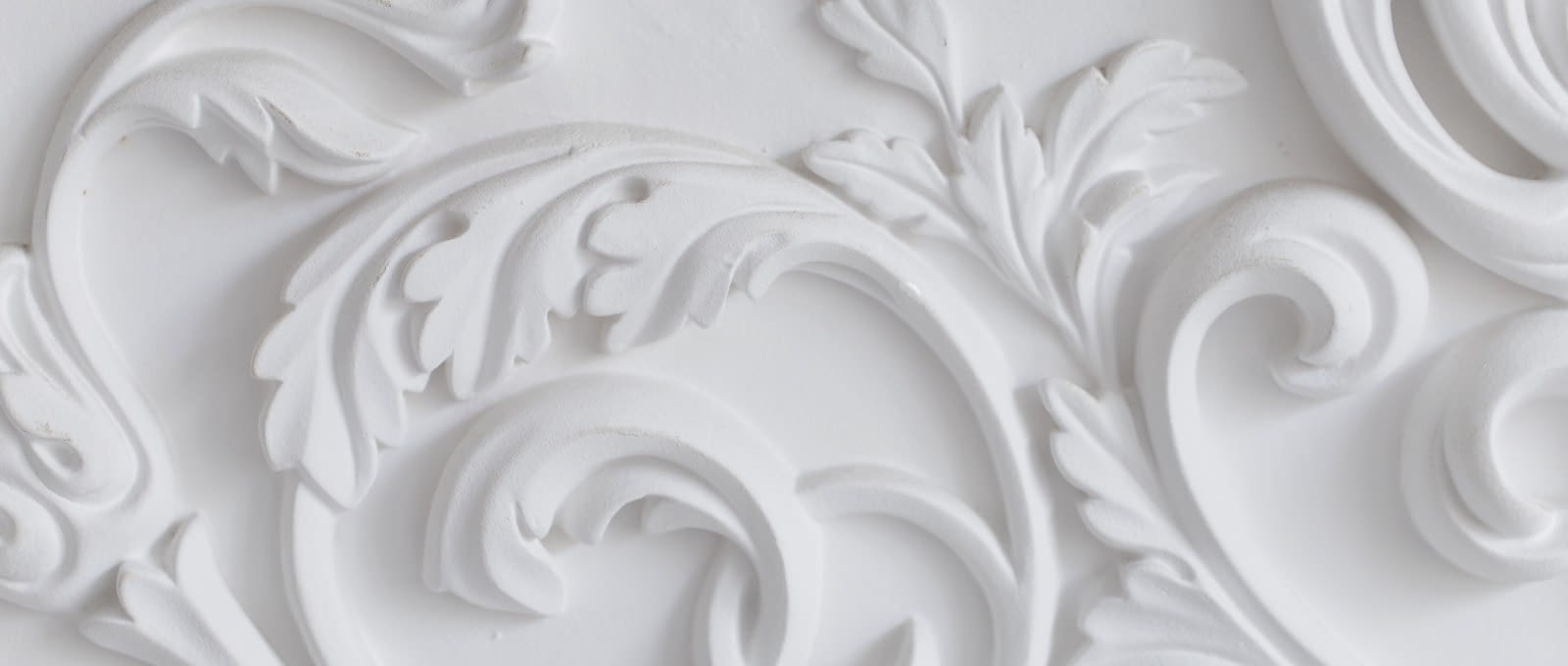With our extensive knowledge and experience working on heritage buildings, Roof Tile Management has developed a highly skilled workforce experienced in plaster restoration, custom fabrication, plaster repair and conservation.
Specializing in interior and exterior restoration of heritage sites, the experts at Roof Tile Management are committed to maintaining the cultural value of Canada’s most prominent heritage buildings. Heritage sites are an important part of our history, which is why we work hard to preserve these buildings.
Plaster Restoration – Preserving the Pleasing Finish
Whether it’s the surface of the walls, or the fine details of intricate mouldings, plaster adds the perfect finishing touch on heritage interiors.
To many artisans, plaster is the ideal material. It can be cast into almost any shape imaginable, allowing them to push their design limits. Well-mixed plaster is also strong and durable, meaning the plaster work can stand the test of time.
The material, finish and form of the plaster can tell historians a lot about a building’s unique history and the plasterer who originally mixed and applied the finish.
Although there are several different kinds of plaster, the type we typically see in Canadian heritage homes and commercial buildings is either lime plaster or gypsum plaster (also known as plaster of Paris).
Know your Plaster
The first step when approaching plaster restoration work is to understand the plaster type and underlying construction method.
Lime Plaster
Lime plaster is made from a mixture of calcium hydroxide and a filler like sand or animal hair. Creating the plaster requires several steps. First plasterers heat limestone to produce quick lime (calcium oxide). The quick lime is then mixed with water to hydrate or “slake” the lime.
The slaking process releases heat. When the heat diminishes and the lime and water mix thoroughly, the result is a lime putty used to make plaster.
Lime plaster was typically used to finish interiors from simple farmhouses to grand homes up to the 1900s.
Challenges with the material include long drying time (it can take more than a year to fully dry), and the necessity to carefully protect the quick lime from contact with the air to ensure the essential ingredient doesn’t become inert.
Gypsum Plaster
Gypsum plaster became the preference for many plasterers because it dried much more quickly. The mixture begins to set 10 minutes after mixing, and while full drying takes two to three weeks, the material is mostly set after about 45 minutes to an hour. The use of gypsum allows designers to finish interiors without having to wait a long time for the plaster to dry.
Despite this clear benefit, gypsum has its disadvantages as well. For one, it is more prone to water damage. As a result, while lime plaster could be applied directly to masonry walls, gypsum requires the placement of furring strips to create an air space that protects the plaster from exterior moisture.
Selection of material for plaster restoration
Unless you’re an expert in heritage material, it can be difficult to tell the difference between lime and gypsum once it has cured.
Expert plaster restorers can identify the finish type, and provide recommendations on the best methodology for the repair or restoration work. They may suggest different mixes such as sand, perlite or pumice to best match the historic colour, finish and texture.
Common Plaster Problems – Don’t Simply Plaster over the Problem
Cracks and chipping, damp spots, or an uneven finish are obvious signs of a plaster problem. Determining the reason for the problem can be a little more difficult. And understanding the cause is a critical piece of the plaster restorer’s assessment.
When approaching plaster restoration, it is important that address the problems that caused the issues in the first place. These can be as varied as:
- Structural problems like overloading, settlement, shifting and vibration – when houses shift, or the background structural material in the walls shifts, expands or contracts, small or large cracks can appear in the plaster. While hairline cracks can be an easy repair, larger cracks may require replastering.
- Poor plaster mixes or incompatible plaster coats – mixing plaster material in the correct proportions and applying in the right method is a fine art. The effects of a poor plaster workmanship may not show up for several years, and can be difficult to repair. If widespread, a complete replastering job may be required.
- Moisture – water damage is the enemy of plaster. Whether caused by plumbing leaks or exposure to exterior elements, you will need to address the source of the problem before completing the plaster repair or restoration work.
If you have plaster problems, you want to make sure the restoration and repair work is performed by professionals who understand the scope of the work, and are intimate with the types of materials and level of craftsmanship needed to complete the project.
Roof Tile Management’s team of accomplished carpenters and plasterers are trained to reproduce the heritage profiles of interior elements by identifying the right materials, and carefully hand-replicating their appearance. Our highly-skilled workforce is experienced in plaster restoration, custom fabrication, plaster repair and conservation.
Contact Roof Tile Management to learn more about plaster repair and restoration for your heritage home or commercial site.

